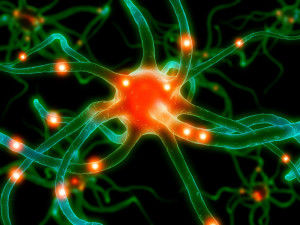
Concussion results in damage to the axonal fibers of the neuron versus actual damage to brain tissue
I have spent the better part of the past 2 years traveling across the USA for PESI Healthcare providing seminars on Cognitive-Communication Rehab and Post Concussion Syndrome. It has been enlightening to witness the research based changes that are occurring in the management of concussion in the home, classroom and playing field. Lesser known concussion phenomena are also coming to light.
The American Academy of Pediatrics has been reporting a significant increase in ED/ER visits for concussion related symptoms in toddlers and preschoolers, due to high-chair, booster seat and bouncy house injuries. There has also been a notable increase in the number of geriatric patients being evaluated in the ED/ER as a result of household falls. Although the majority of media focus has been on the student and professional athletes experiencing concussion, as clinicians we need to recognize that this is a phenomena occurring throughout the lifespan. As such, we can expect to see the results of these lifestyle changes in many of our clinical practice settings, both medical and educational. The functional management of concussion at any age begins with an effective and appropriate assessment that takes into account the age and pre-existing cognitive-communication status of the patient. Some of the more widely used, free public domain assessments currently available to clinicians include the following:
- SCAT 3 (Sport Concussion Assessment Tool)
- Adult and Pediatric versions SAC (Standard Assessment of Concussion)
- ACE (Acute Concussion Evaluation)
- The NFL Sideline Assessment Tool
In addition, numerous functional outcome measurement scales and tools can be found in the book The Practicioner’s Guide to Measuring Outcomes After Acquired Brain Injury: A Compendium of Tests, Scales and Questionnaires by Robyn Tate, Psychology Press, 2008. Many of the scales identified in this book are also free to use in public domain. Best of all – there are scales/tests that can be utilized by SLPs, PTs, OTs, Pyschologists and Nursing! To see an index of the assessment tools identified and discussed in the book, go to the following website: compendium-of-scales.com/contents.htm
Lastly, I’d like to share my most recent assessment tool discovery : The STAC (Standardized Touchscreen Assessment of Cognition). This is not a freebie. It is an application that was created for use on the iPad by a Speech Pathologist and an Occupational Therapist. It assesses many cognitive domains (via self-assessment; the clinician observes the patient’s progression through the test and has the opportunity to engage in some observational assessment), has normed references based on chronological age, scores the test based on speed of response and accuracy of response and generates a 4 page report consisting of qualitative and quantitative data that can be easily emailed to the clinician for inclusion in the patient’s medical record. This is my new “go to” assessment for concussion in teenagers, young adults, adults and geriatric patients without a pre-existing history of dementia. I have also used it with a few of my higher functioning aphasic patients as well On average it takes about 30 minutes to complete.
These are just a few of the many resources that are discussed during my Post Concussion Seminar – a good starting point for clinicians who are experiencing an increase in this rapidly growing presence in our clinical practices. As always, please feel free to email me at geseminars@gmail.com with any questions or requests for additional information or resources.
Thanks for visiting, Gina